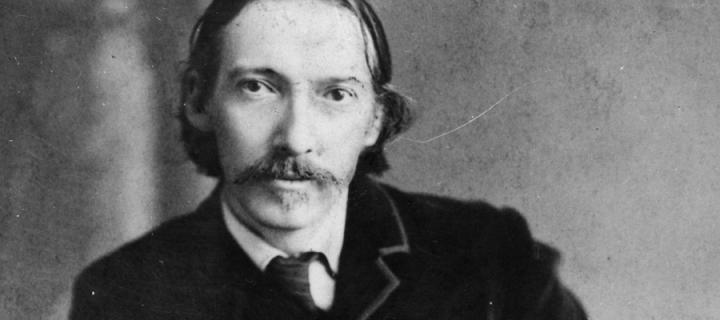Robert Louis Stevenson (1850 - 1894)
Scottish novelist, poet, essayist and travel writer who wrote much the loved classics ‘Treasure Island’ and ‘Strange Case of Dr Jekyll and Mr Hyde.’

Born in Edinburgh on November 13, 1850 to a family of leading lighthouse engineers, Stevenson originally planned to follow in his father’s footsteps.
Avoiding lectures
He enrolled at the University of Edinburgh in 1867 to study engineering but showed little interest in the subject, instead spending much of his time avoiding lectures. Business trips with his father to inspect the family’s engineering works in Anstruther and Wick did very little to spark an interest in engineering but provided inspiration for his writing.
In 1871 he notified his father of his intention to pursue a life of letters. This, on its own, was not acceptable and so a compromise was made. Stevenson agreed to attend the University of Edinburgh to study law so that he would have a respectable profession to fall back on should his writing career fail him.
A life beyond law
Despite being called to the bar in 1875, Stevenson chose not to practise and instead continued to write. While at university, he had trained himself to be a writer by imitating the styles of popular authors including Daniel Defoe and his essays had been published in several periodicals.
After university Stevenson travelled widely and this wanderlust resulted in his first books; An Inland Voyage and Travels with a Donkey in the Cevennes, both based on his time in France.
Escaping the cold
Though he spent long periods abroad on the hunt for a climate that would improve his health; including time in America where he pursued and married divorcee Fanny Van de Grift Osbourne, many of his most famous novels were written in the UK. Treasure Island was begun in a Braemar cottage in the summer of 1881, and both Kidnapped and The Strange Case of Dr. Jekyll and Mr. Hyde were written in Bournemouth, the Stevensons’ home from 1884.
I have so many things to make life sweet for me, it seems a pity I cannot have that other thing – health.
In June 1888, once again on the hunt for a warmer climate, Stevenson chartered a yacht and set sail with his family from San Francisco. For three years they toured the eastern and central Pacific, stopping off for extended stays in the Hawaiian Islands, Gilbert Islands, Tahiti, New Zealand and the Samoan Islands. Stevenson continued to write and as well as ballads, he completed the novel The Master of Ballantrae.
Finally, in 1890, the travelling ended and he bought a tract of about 400 acres on the island of Upolu in Samoa. On Samoa he involved himself in local politics, became a noted figure on the island, took the native name Tusitala - Samoan for teller of tales, and continued to write. Before his death in 1894 he wrote The Beach of Falesa, Catriona, The Ebb-Tide, Vailima Letters, and began Weir of Hermiston, which was left unfinished.
A lasting legacy
Stevenson became a literary celebrity during his lifetime and now ranks amongst the top 26 most translated authors in the world. Over a hundred years after his death, his works are widely read and frequently adapted for stage and screen.
The University of Edinburgh erected a commemorative plaque to celebrate Stevenson’s achievements, influence and notoriety at 7 George Square.

